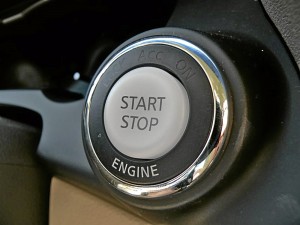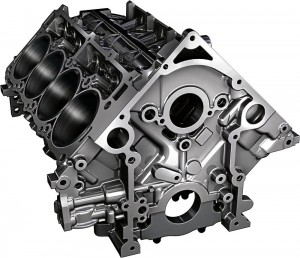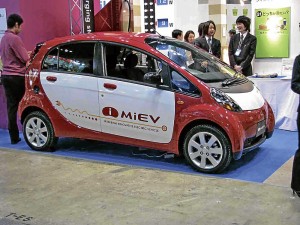12 exciting auto innovations that came to fore this year
The 2012 automotive calendar year has seen innovations coming in leaps and bounds. While these technologies were introduced several years back, it was only this year that they were featured in more vehicle models.
Automotive engineers and scientists who were tasked with the goal of making today’s generation of vehicles more efficient and much more safe deserve all the praise for delivering pretty impressive tricks in their battle for attention from global markets.
1 Refined automotive lightweighting
It has been estimated that every 10 percent of weight reduction yields a decrease of between 6 and 7 percent in fuel consumption. This is important considering that by almost all accounts, the days of abundantly cheap fuels are over—and one of the biggest areas available in which to make gains is in reducing the mass of vehicles.
This means, every miniscule and seemingly insignificant weight savings, when taken together, could up add to significant amounts in vehicle weight reduction.

A push-button start was one of the top three desired features in today’s cars, right behind GPS and smartphone connectivity.
This is why majority of 2012 models now feature engines and body panels made up of the much lighter aluminum alloy. In fact, major parts of today’s vehicle models are made of recycled plastics, replacing the much heavier metallic and glass parts previously used in bumpers, fenders, panels, lighting fixture and windows.
2 Drive-by-wire
Majority of older model cars still use the heavy and bulky mechanical linkages to control throttle response, steering and even braking. This year saw majority of current vehicle models featuring lighter and much smaller electric components commonly referred to as “drive-by-wire.”
Thess electrical and electronic components were first used in the late ’70s to control United States’ jet fighter, the F-16 Fighting Falcon, so it’s quite safe to assume that this technology has been refined and proven to be safe.
3Longer-lasting tires
Before Michelin launched its Energy series of tires—the so-called Energy XM2—very few cared about coming up with tires that is dedicated to fuel saving, maximum safety and longer mileage.

Even the less-than-a-million-peso Ford models now feature an Active Park Assist that allows the car to steer itself into a parallel parking space while the computer guides the driver on when to apply gas and brakes through audible signals and on-screen instructions.
What is more interesting is that the very advanced Energy XM2 tires target owners of lower-midsized and entry level passenger vehicles, who demand for tires that are economical, safe and durable.
Indeed, Michelin spent millions of dollars and gathered about 6,000 people to develop a tire that employ “Full Silica Compound,” “Micro Adaptive Compound” and “Alternating Bridging Technology” that maximize fuel saving, safety and tire longevity.
4 Next-generation fuel
Just when we thought all fuels are formulated in the same manner, Shell this year introduced its next generation of high-density, high-octane gasoline that is designed to optimize the performance of regular vehicle.
By providing power more smoothly, more quickly, in comparison with regular unleaded gasoline, Shell’s new formulation makes any vehicle more responsive, thus making every drop of precious fuel count.
Moreover, the cleansing properties of Shell’s V-Power unleaded gasoline will help any vehicle engine, regardless of age. Shell V-Power’s formulation is designed to remove carbon deposits on inlet valves, fuel injectors, as well as keep carburetor systems clean and in peak condition (clean fuel injectors, carburetors and inlet valves lead to consistently excellent gasoline/air mixture preparation, better combustion, better driveability and optimum performance).

As more automakers try to make vehicles lighter and more fuel-efficient, more and more engine blocks are being cast from the much lighter aluminum alloy.
5 Park Assist in more vehicle models
The new buzz phrase for vehicle sellers these days is “Park Assist,” a technology where your vehicle literally parks itself.
It began as optional equipment on some luxury vehicles a few years back; however, this year, Park Assist has suddenly become much more common than they once were.
6 Better electric cars
Although electric cars have been around since the 1820s, they have not really taken off on any sort of mass scale production because of primitive and limited battery technology.
However, with battery technology rapidly improving in the last 10 years, electric vehicles have been able to be produced on a mass scale.
Apart from the highly successful (part-electric) Toyota Prius, one model that is receiving global approval is the all-electric and plug-in Mitsubishi’s i-MiEV that features much-improved battery storage capabilities, shorter charging times, overall reduced costs and, more importantly, a more reasonable price tag.
Designed and originally available only to Japanese customers in 2009, the i-MiEV this year is now being exported worldwide. Coming in at just $30,000 (about P1.2 million although this may vary once it’s sold here), this i-MiEV gets about 130 kilometers on full charge while producing zero tailpipe emissions. The compact hatch has an extremely tiny hood, but its interior can easily hold four adults in an efficient and comfortable manner.
7 Lithium ion batteries
Today’s generation of lithium ion batteries now have a much higher energy density than lead acid or nickel metal hydride. They’ve long powered cordless power tools and laptop computers, but have also suffered a nasty penchant for exploding when they got too hot. Good thing engineers have now worked out the kinks enticing major automakers to put them in their mass-produced vehicles.
8 Greater smartphone integration
The past years saw the rise of smartphone. However, only few automakers cared to integrate them to their latest models. This year made a lot of difference as smartphones are now able to easy integrate into all aspects of the vehicle, from streaming music or movie files stored inside the phone straight into the car’s multimedia system, to making phone call hands-free and effortless.
9 Push button ignition
What’s faster than starting an engine via a push-button ignition? A number of production vehicles are now using this racing technology, which starts the car at the touch of a button, not the turn of a key.
10 Independent suspensions
We may not realize this but most production cars this year now employ independent suspensions—multilink suspensions or MacPherson struts—that allow each wheel to move without affecting the movement of the other wheels.
This technology makes our vehicles more stable and makes sure that all wheels maintain contact with the road.
11 All disc brake-equipped wheels
An innovation in car racing in the 1950s, disc brakes gained popularity because they were powerful, easier to keep cool and to maintain than drum brake design. These days, all but a few cars have disc brakes on at least their front wheels as most have disc brakes on all four wheels.
12 Better, aerodynamic exterior design
You may have noticed it, most vehicles on sale this year now feature exterior components like bonnet/hood scoops, fender flares as well as spoilers. They even feature smooth, flowing shapes.
While they make your vehicle look great, they actually serve a more serious purpose: These spoilers and air dams help keep our vehicles more stable at higher speed. Automakers soon added these features to many of today’s production cars—in a slightly toned-down form, of course—to make their vehicle not only stable and faster but also more efficient, fuel consumption-wise.















